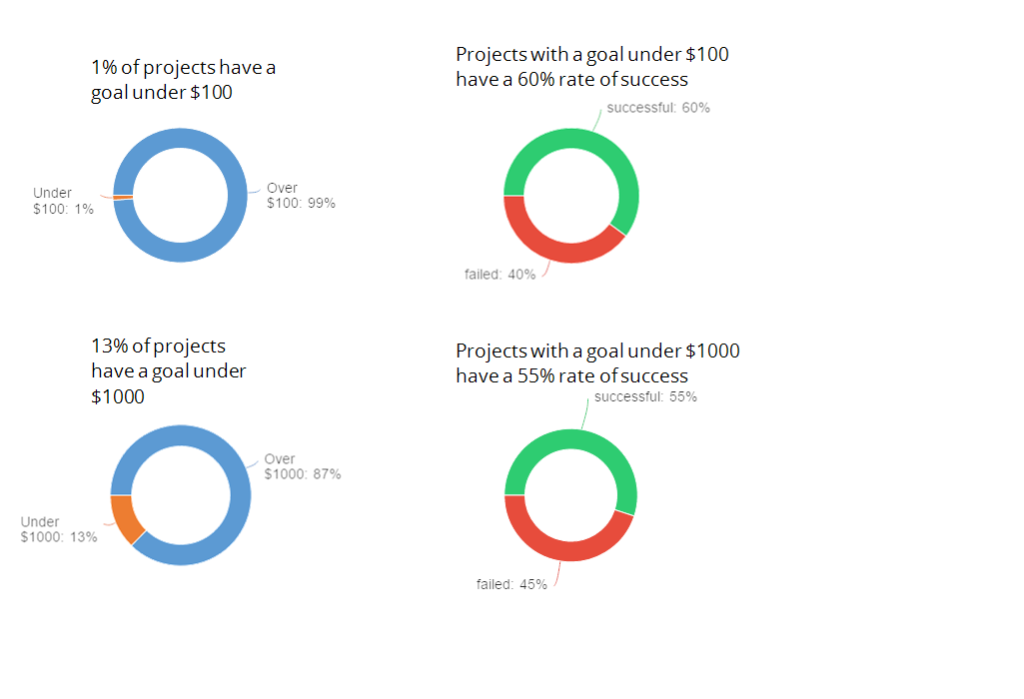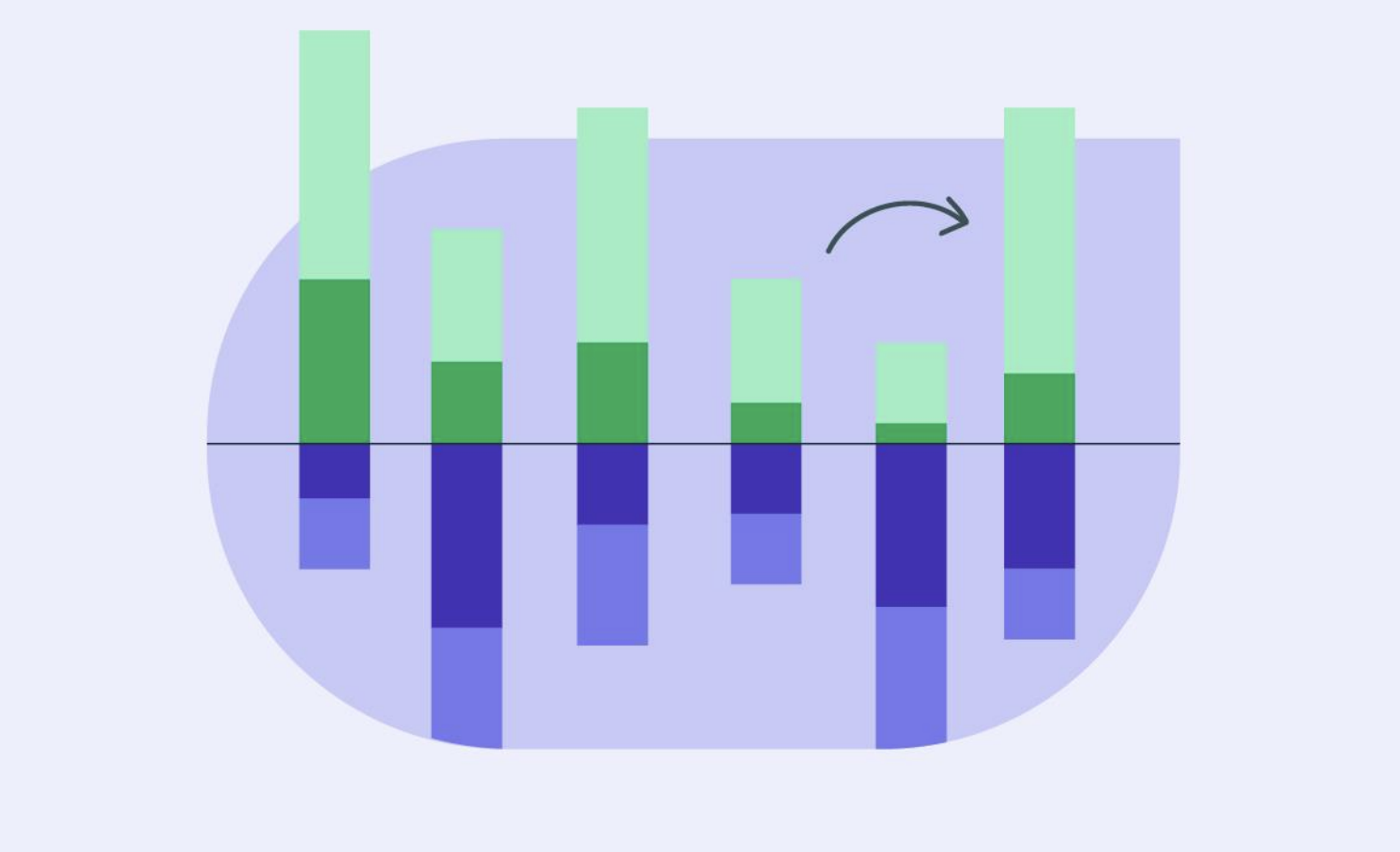
How to Guarantee* Your Kickstarter Will Succeed!

*We can't actually guarantee the success of your Kickstarter. Sorry! But we can show you what the data says about past Kickstarters, and the factors that may have led to their success or failure. Read on to find out!
The data
Kickstarter describes itself as a platform to help "artists, musicians, filmmakers, designers, and other creators find the resources and support they need to make their ideas a reality." Since the launch of the crowdfunding platform in 2009, almost 150,000 projects have been successfully funded. 15 million people have backed projects on Kickstarter, pledging a total of USD $3.8 billion. Some Kickstarter projects have raised thousands or even millions of dollars. But what are the odds of your project being successfully funded?
For this analysis, we looked at a dataset of over 300,000 Kickstarter projects from 2009 to 2018. It contains data including the project's name, category, state (outcome), goal, deadline, and how much was pledged. From this data we can start to look at some of the factors that influence the outcome of a Kickstarter project.
The projects
Kickstarter is designed specifically to fund creative projects. The platform provides 15 categories which projects must fit into. The first thing we can do is look at which categories most projects fall into.
We can see that projects on Kickstarter are diverse, with no one category dominating the field. The biggest categories are Film & Video and Music, but they're closely followed by Publishing, Games, Technology, Design, and Art.
Project Success
Sadly but perhaps not surprisingly, here we see that more Kickstarters fail than succeed. Over half the projects in this dataset failed, and there's only a 35% success rate.
However, all hope is not lost! On the Kickstarter website, they state that 78% of projects that raised at least 20% of their goal were successful. The chart below shows that this statistic is supported by our dataset, with 77% of projects which raised 20% or more of their goal succeeding.
We can also break this down by category to see which categories are most likely to succeed. Here we've excluded projects that were cancelled, suspended, are undefined, or were live when this data was collected. This leaves only projects which either failed or succeeded, which comprise 88% of the total dataset.
Dance, which comprises only 1% of all projects on the site, leads the pack with a 65% success rate! This is closely followed by Theater and then Comics and Music. These are the only four categories in which a project is more likely to succeed than fail. At the other end of the scale, Technology and Journalism look dire, with 76% of these projects failing.
Create your Column Chart in Displayr
The impact of your goal
What could be the reason for this? Kickstarter allows users to set the goal for their projects at whatever they want. In this dataset, goals range from $0.01 to over $160 million. (It's likely that most of the projects with goals this high or low are joke projects, but judging from the project names, at least some of them seem to be serious.) We can compare the median goal of each category to its success rate to see whether they are correlated.
Technology, tied for the lowest success rate, stands out with a median goal of $20,000 - twice as high as the next highest category. We can't say for sure that this is the reason for its low success rate, but it does seem logical that it would play a part. The four categories with a success rate of more than 50% - Dance, Theater, Comics, and Music - all have relatively low median goals of under $5000. However, Crafts, with the lowest median goal at just $2345, has the third worst success rate. This is interesting, but clearly not the whole story.
If we exclude projects which are undefined, live, suspended or cancelled, Kickstarter projects have a 60% failure rate.
The visualizations below show how the rate of success changes depending on the goal of the projects.

The impact of your backers
Projects on Kickstarter are funded by backers - users who pledge money towards a project's goal. While creators can certainly take steps to improve their chances of success, ultimately every Kickstarter project lives or dies by its backers (or lack thereof). However, the visualizations below show just how important it is to have a large number of backers.

Will your Kickstarter succeed?
Success or failure on Kickstarter depends on a wide range of factors. It's extraordinarily difficult to predict what will go viral, and it's impossible to predict with certainty which Kickstarter campaigns will succeed. However, we can make a guess based on the variables we've discussed in this article. Below is a decision tree visualized as a Sankey diagram. This visualization shows whether a campaign is likely to succeed or fail based on its category, goal, and number of backers. You can zoom in by scrolling, and hover over the forks to see the statistics.
Create your own CART decision tree
Ultimately, what can we say about how best to succeed in your Kickstarter campaign? Make sure you're trying to fund a Dance project and that you don't need more than $1000. Oh, and make sure you have at least 1000 friends who are willing to back you!
Make your own column chart here, or a Sankey decision tree here! Check out the rest of our Data Stories for more.



